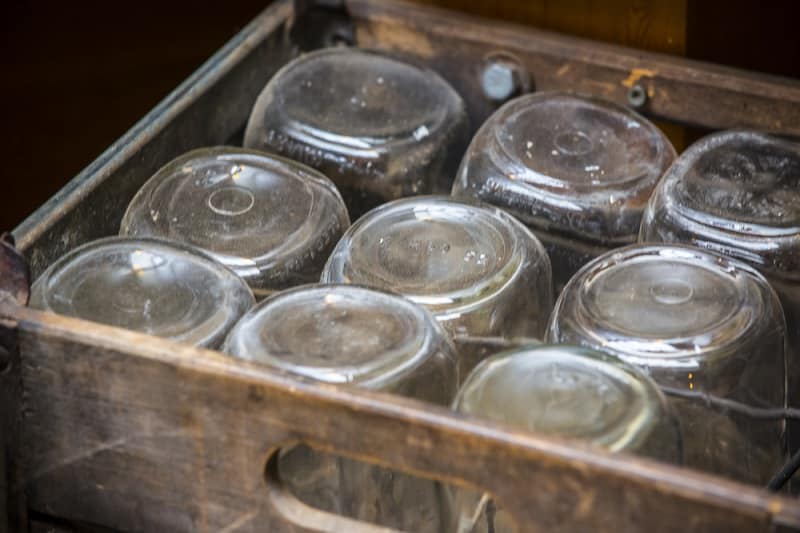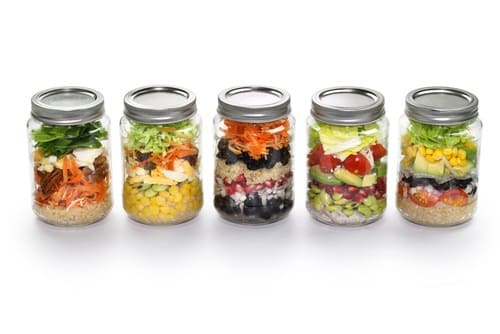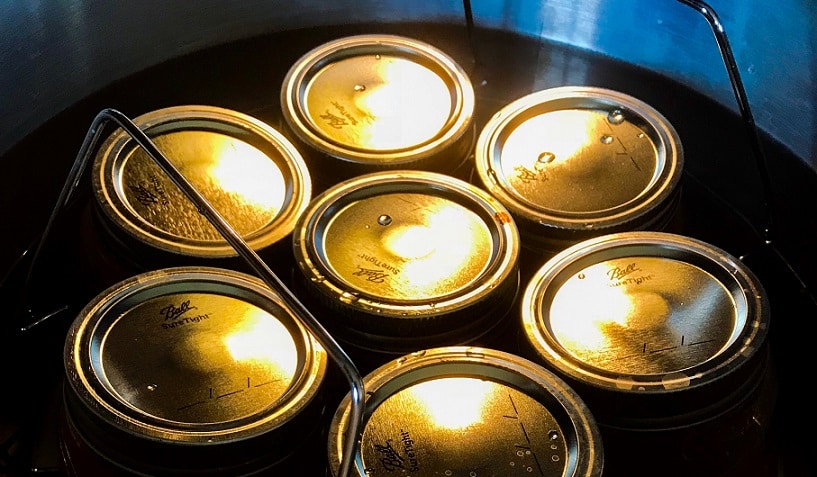
The Mason jar (aka ball jar, fruit jar, glass canning jar, Kilner jar, and lightning fruit jar) is a three-part sealing device. The three separate parts are a metal band (ring), a metallic lid, and a glass body.
The Mason jar’s glass body has a screw thread on its outer upper surface. The screw thread is what attaches the metallic ring to the glass body.
The metallic lid – which has a silicone gasket installed on its inner side – is fixed on top of the glass body by placing it on the glass rim below the metallic ring before screwing.
The Mason jar is a popular item that has been used for generations to can various types of high-acid and low-acid foods for preservation and storage for later use. The glass body is thick enough to withstand around 12 to 15 psi pressures and temperatures above 100 degrees Celsius.
Why do mason jars get rusty?
The Mason jar’s glass body will never rust because it’s obviously made entirely of glass. It can be reused over and over again until it either breaks or chips.
The metallic ring and lid, on the other hand, are prone to eventually rusting. The rust quantity depends upon three things – material, food pH, and environment.

Most metallic lids and rings are made from tin-plated steel. And unlike stainless steel, the tin-plated steel is extremely prone to corrosion.
This means that the metallic lids and rings made from tin-plated steel get rusted easily. This is why mason jar-making companies advise against using a metallic lid twice. In essence, the rings and lids are disposable.
Acid is even more dangerous than water when it comes to its ability to rust tin-plated steel. This is why the inside of a mason jar lid is coated with a chemical called bisphenol (BSA) to protect it from acid corrosion.

If a high-acid food such as tomatoes is stored inside a BSA-absent jar, the acid will corrode through the lid, and as a result, would expose the inner contents to spoilage and pathogenic bacteria.
Humid environments contain many water molecules that can cause your mason jar lids and rings to rust as well from the outside. Long periods of storage can lead to extreme rust, becoming a health hazard because of poor sealing.
Preparing your jars and lids for canning
Be sure to store your new, unused lids in a cool, dry place when not in use to prevent them from rusting. Stored correctly, they can be stored for up to five years. However, try to buy only the number of lids you intend to use that year.
It would be best to boil or sterilize the lids before canning because this will destroy the sealing compound on the lid and lead to food spoilage. Wash the lids and jars in warm, soapy water, rinse, and dry.
To further prevent rust from forming, use this handy tip. When you have finished canning, and the jars are cool, remove the ring bands. The lid itself should have formed a vacuum seal against the mason jar.
If a seal has not formed, you must discard or re-can the item. Carefully rinse the bottles with warm soapy water or wipe them down with a wet cloth to remove any food particles.
Dry and label the bottles. You may now store the jars without the ring. This helps prevent rust from forming and lets you easily see if the seal becomes compromised.

Is Rust on Mason Jar Lids Dangerous?
The rust itself consists of iron oxide, which is not dangerous to the human body. Even if you eat a little of it, it will not harm you.
However, excessive rust on the rings and lids of mason jars can lead to improper sealing and sealing breaches, both of which can cause the food inside to become extremely hazardous. Consuming it will make you ill.
The mason jar lids and rings are extremely cheap to buy. So, we advise you to replace your lids and rings if the rust interferes with the sealing process. If the lower side of your mason jar lid is rusted, throw it away immediately.
How to get rid of and prevent rusting?

You can prevent your tin-plated rings and lids from rusting by storing them in a dry place and never washing them in the dishwasher. Dry them immediately after washing.
If your rings and lids have already rusted, you cannot use them for canning, but you can certainly use them for taking salads to work, storing knick-knacks like sewing equipment, or many different craft projects.
Here’s how to remove the rust first:
- Place your mason jar lids and rings into a pot of warm water.
- Scrub every single rust spot with a scouring sponge. Don’t ever use a dishwasher to clean your mason jar lids and rings.
- Next, put some vinegar on your sponge and use this to clean off any remaining rust spots. If there is a lot of rust, it may help to soak the lids in vinegar for a while before scrubbing them.
- After washing, make sure to dry them thoroughly before storing them inside a dry cabinet.
Conclusion
If you live in a humid region where rust is a big problem, you may want to invest in some stainless-steel mason jar lids. These are more expensive but will never rust.